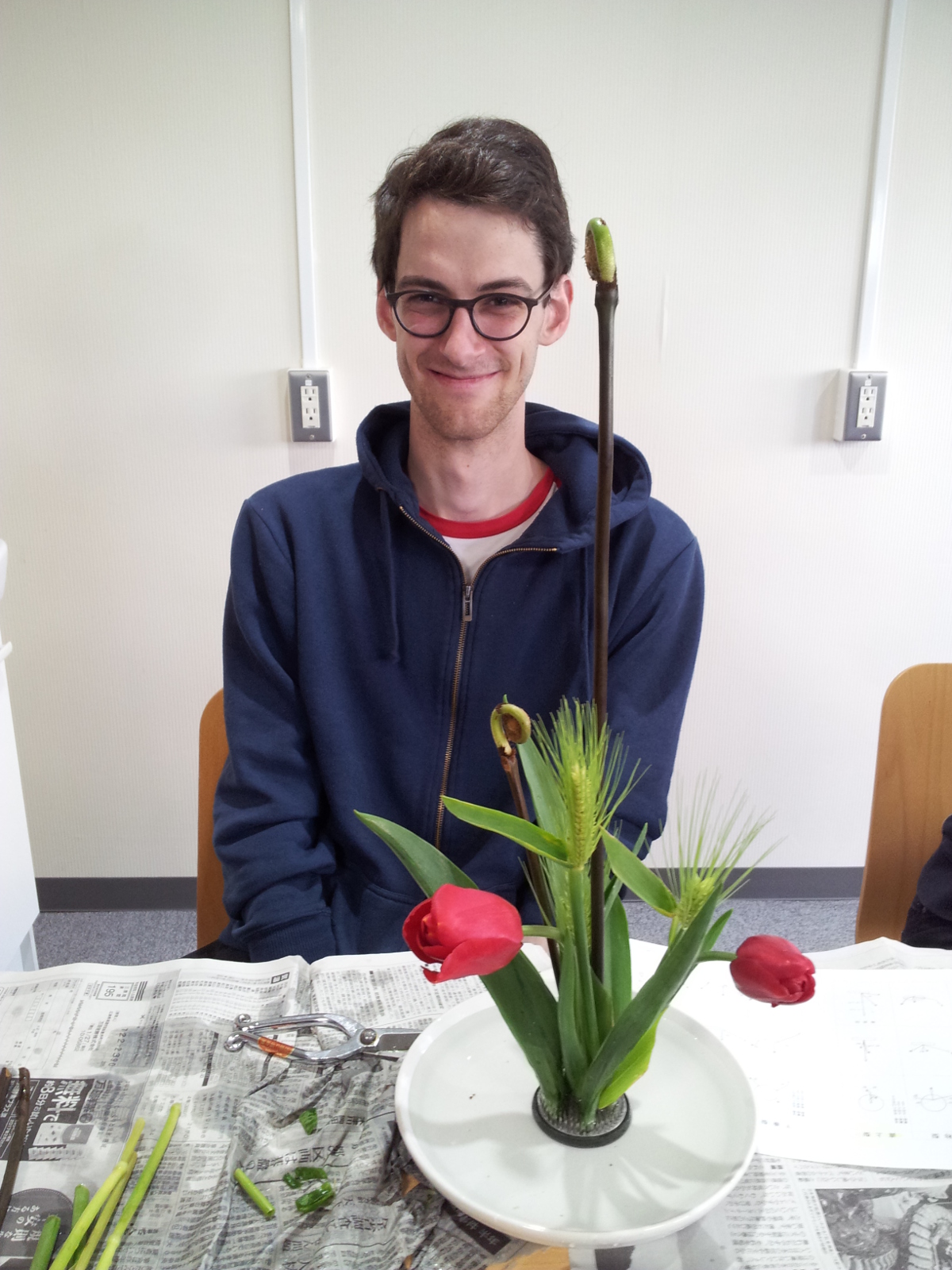Ikebana
※ This article discusses a workshop, I attended on 4th of February 2017.
I didn’t really have an idea how Ikebana ( 生 け 花 , いけばな) is done. However, I looked at the Ikebana Wikipedia article and enjoyed the pictures. Indeed. A nicely balanced flower arrangement combined with good photography (proper ambient light, balance in weight, etc) can give very nice impressions and this is what made me interested in Ikebana. KOKORO-NET already organized the lovely Calligraphy workshop for us in the residence and this workshop is another one in a sequence.
It started at 14:00 and was scheduled for 2 hours. It also took 2 hours for 3 designs and a photo session plus small talk. For 200 Yen (1.66€), I got three tulips and other plants. I have no clue how they are called. Instructions were only given in Japanese and I could barely understand what they said. I forgot the names of the plants. Other students got other flowers and there were 10 students and about 7 instructors.
The most interesting thing - to me - about Ikebana was using the Kenzan. The Kenzan is a spiky plate to fix stipes on it. You are given a set of plants and a basic layout. To the best of my knowledge, we did some Moribana layouts ( 盛 り 花 ) which means the vase is flat (and often very wide) and the stipes are fixed on the Kenzan very close to the ground. We were given three basic layouts to try. In one of these layouts, the largest stem has to have 1.5 times the length of the vase’s width. It has to be placed upright (90 degrees). The second part has to have a length of 1/2 leaning slightly towards the left side. It also has to lean by 30° towards the viewer. The third stem must have a length of 1/3 of the vase’s width and be placed slightly towards the right. It also has to be bent by 80° towards the viewer. Once you are finished with the basic layout, you can add other flowers arbitrarily, but the main weight should be on the three stems introduced. The Kenzan should be hidden as much as necessary (depending on your view angle).
One theoretical thing: All cuts with the scissor should be done underwater. However, this is impossible if you have a stem you cannot bend and is long enough not to fit into the vase.

In the end: A smooth introduction, but I did not like how my instructor changed my plans. In order to do some serious Ikebana, you also need more selection for your plants, I suppose.